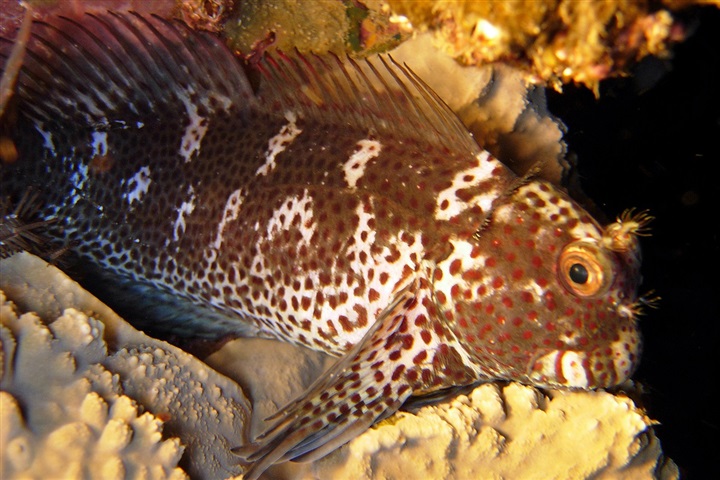Cirripectes randalli

| Latin name | Cirripectes randalli - Williams, 1988 |
|---|---|
| Family | Blenniidae - Cirripectes |
| Origin | East Indian Ocean |
| Max length | 11 cm (4.3") |
| Minimum volume |
300 l (79 gal) |
|---|---|
| Hardiness |
Average |
| Suitable for aquarium |
Suitable with care |
| Reef safe |
Reef safe with caution |
| Aggressiveness | Might be aggressive towards food competitors |
| Recommended |
Macroalgea (Eg. seaweed / nori) Microalgea (Eg. spirulina) Zooplankton (Cyclops, pods...) |
|---|
There is little available knowledge of this species, so there can be important information missing on this page.
These fish should be kept in a well run aquarium where they can "graze" algae from rocks and stones.
If there are insufficient algae on the rocks, it is important to feed more frequently and supplement with algae rich food e.g. Spirulina.
This species can live as a pair (male and female).
There are many differences within the Toothcomb Blennies family, some eat algae whilst others eat zooplankton. There are many families of Blennies, this is merely one of them.
What they have in common are their oblong shape and long dorsal fin. Some species have small "legs" used to move around the bottom.
These Blennies do not normally get very big and are therefore a good choice for both small and large aquaria. They are not often very colorful, but many have a fun personality which many aquarists fall for.
The species of the families Aspidontus and Plagiotremus imitate Cleaner Wrasses and can therefore be difficult to identify.
| Aquarium trade | No |
|---|---|
| Distribution | Western Indian Ocean: known only from Mauritius and Cargados Carajos Shoals. Recently reported from Reunion (Ref. 53568). |
Jeff Kurtz. 2007. Combtooth Blennies: Bewitching Bottom Dwellers - Tropical Fish Hobbyist - (English)
Scott W. Michael. Reef Aquarium Fishes: 500+ Essential-to-know Species - TFH Publications / Microcosm Ltd. - (English)
Bob Fenner. The True/Combtooth Blennies, Family Blenniidae - Wet Web Media - (English)
Bob Fenner. Blennioids: Blennies and Blenny-Like Fishes - Wet Web Media - (English)

